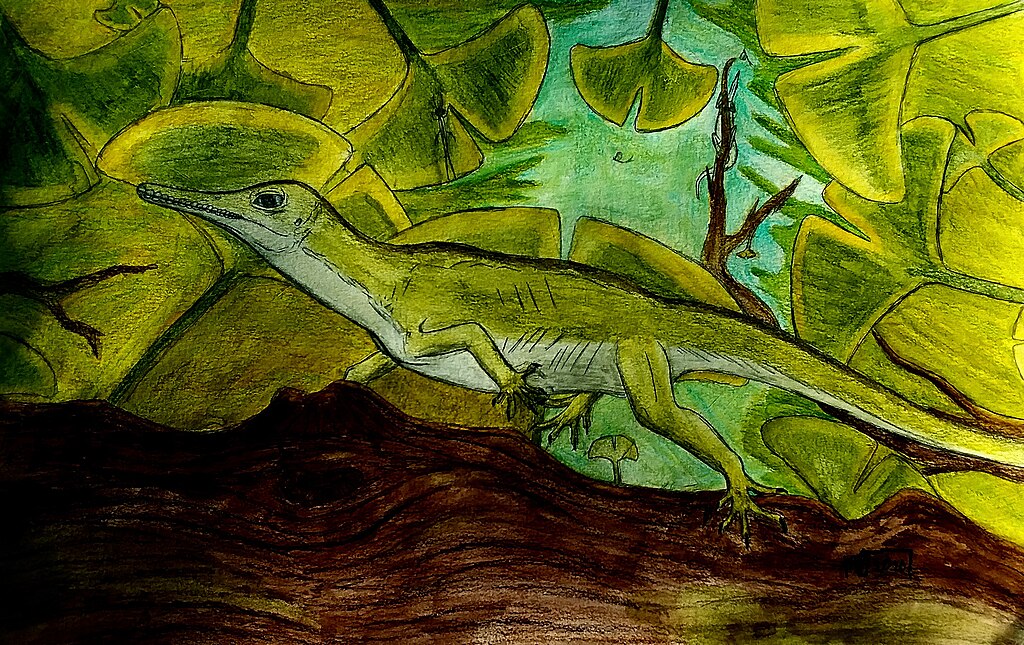In 2020, the paleontological world was stunned by an announcement that seemed to rewrite our understanding of dinosaur evolution and miniaturization. A tiny skull, preserved in 99-million-year-old amber from Myanmar, was described as belonging to Oculudentavis khaungraae—a creature so small it was compared to modern hummingbirds. This discovery appeared to represent the smallest dinosaur ever found, challenging long-held assumptions about the size limitations of dinosaurs and offering a rare glimpse into the Mesozoic microworld. However, what followed was a scientific drama that would illustrate both the power and self-correcting nature of paleontological research. Let’s explore the fascinating story of Oculudentavis and what it teaches us about science in action.
The Extraordinary Initial Discovery
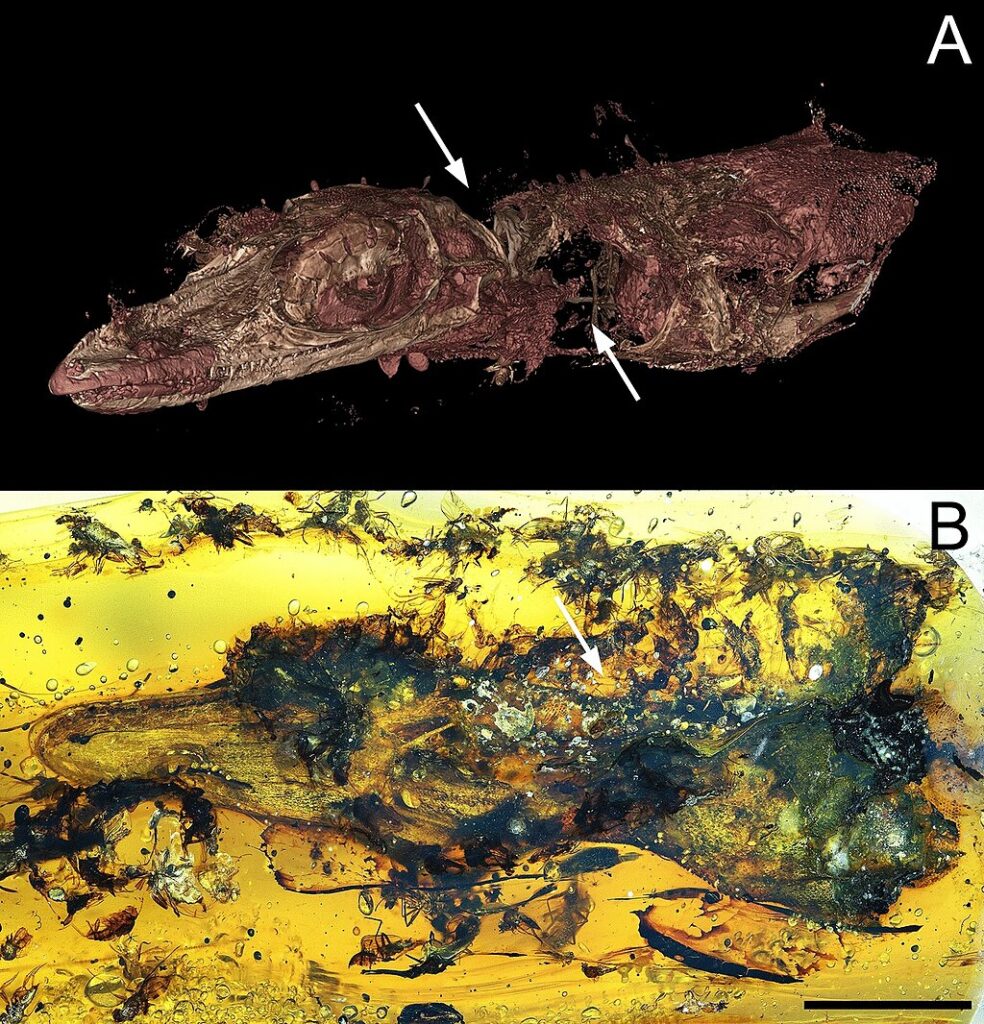
In March 2020, a research team led by Lars Schmitz and Jingmai O’Connor published their findings in the prestigious journal Nature, revealing what they identified as a hummingbird-sized dinosaur trapped in amber. The specimen, named Oculudentavis khaungraae, featured a skull measuring just 14.25 millimeters in length, suggesting a body size comparable to the smallest living birds. The fossil was exceptionally well-preserved in amber from the Hukawng Valley in Myanmar, dated to the mid-Cretaceous period, approximately 99 million years ago. What made this discovery particularly astounding was not just the animal’s minuscule size, but the implications it held for understanding avian evolution and the remarkable preservation that amber provides for delicate structures that would typically be lost in conventional fossilization processes.
Anatomical Features That Baffled Scientists
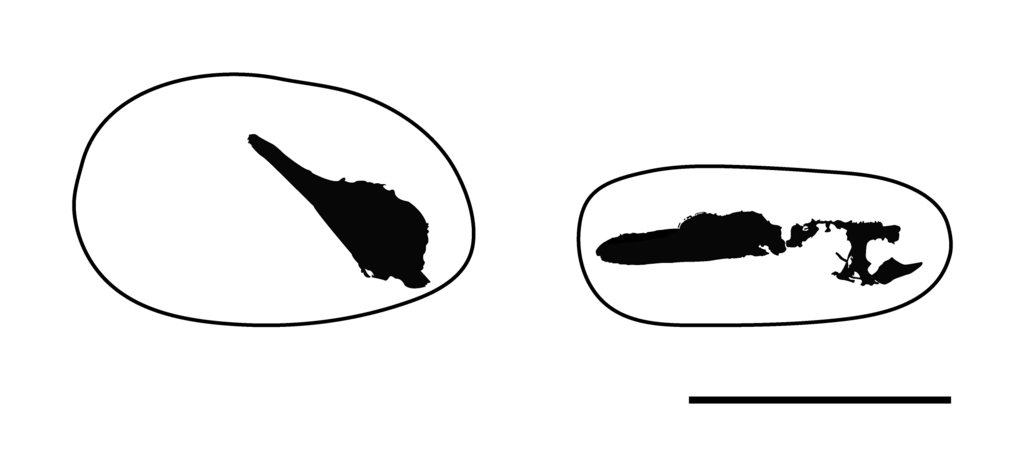
The skull of Oculudentavis exhibited a puzzling combination of features that initially led researchers to classify it as an early bird-like dinosaur. Most striking were its large eye sockets, which contained scleral rings—bony structures that support the eye, suggesting diurnal habits adapted for bright conditions. The creature possessed a surprisingly long, tapering snout filled with numerous sharp teeth, contrasting with the beaks of modern birds. This dental arrangement indicated a predatory lifestyle, perhaps feeding on small invertebrates. Adding to the mystery, the skull showed a fusion pattern and brain structure that seemed intermediate between dinosaurs and birds, with features resembling both groups. These characteristics led to its initial placement within Avialae, the group containing birds and their closest dinosaurian relatives.
The Name Behind the Creature

The name Oculudentavis khaungraae itself tells a story about the animal’s most distinctive features. “Oculudentavis” combines Latin roots for “eye” (oculus), “tooth” (dentis), and “bird” (avis), effectively meaning “eye-tooth-bird”—a fitting description for a creature characterized by its proportionally enormous eyes and toothed jaws. The species name “khaungraae” honors Khaung Ra, who donated the amber specimen for scientific study. Naming new species is a thoughtful process in paleontology, often reflecting physical characteristics, geographical origins, or honoring individuals who contributed to their discovery. In this case, the name encapsulated what scientists initially believed were the animal’s most defining traits, creating a linguistic snapshot of their early understanding before subsequent revelations would complicate the picture.
Miniaturization in the Dinosaur Family Tree
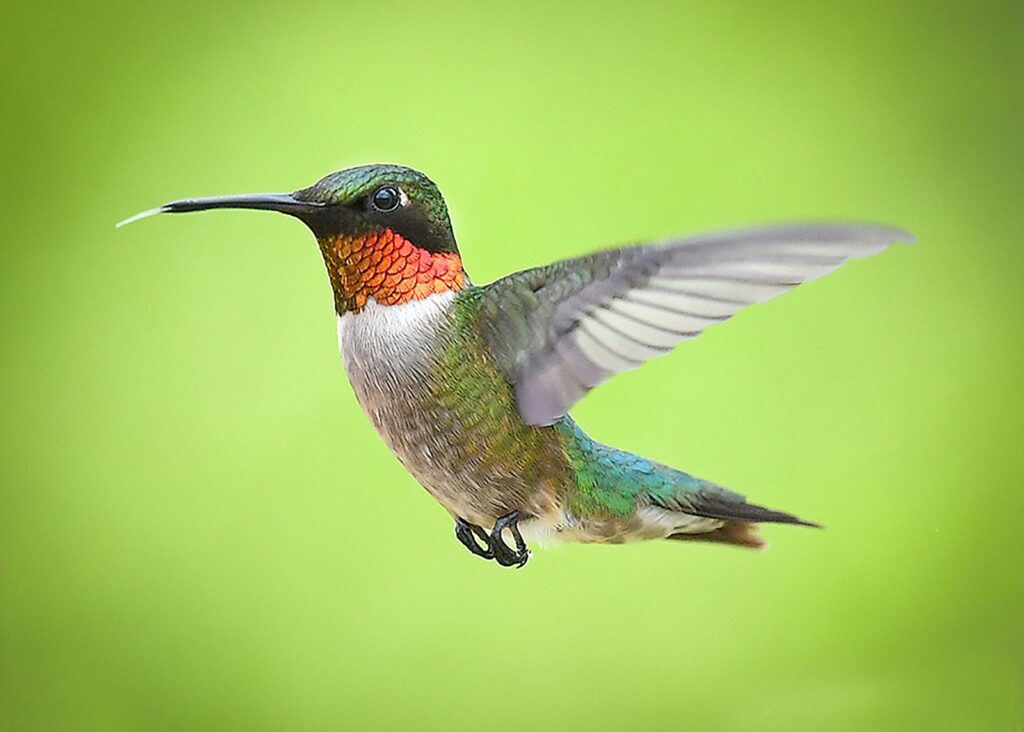
The apparent extreme miniaturization of Oculudentavis initially represented a significant evolutionary puzzle. Dinosaurs and their bird descendants generally follow what’s known as Cope’s rule—a tendency toward increasing body size over evolutionary time. Small body size requires specialized adaptations to maintain warm-bloodedness and meet metabolic demands, making extreme miniaturization relatively rare in the dinosaur family tree. Modern hummingbirds, which Oculudentavis was initially compared to in size, evolved their diminutive dimensions much later, making this seeming Cretaceous example particularly noteworthy. The discovery temporarily suggested that extreme miniaturization might have evolved independently multiple times in the bird lineage, representing a case of convergent evolution driven by the advantages of exploiting small-bodied prey or nectar resources that larger animals couldn’t efficiently utilize.
The Scientific Controversy Emerges

Almost immediately after publication, the classification of Oculudentavis faced intense scrutiny from the paleontological community. Several researchers expressed skepticism about its placement among bird-like dinosaurs, noting characteristics that seemed inconsistent with avian anatomy. Within weeks, alternative interpretations began circulating, with some scientists suggesting the creature might not be a dinosaur at all. The controversy highlighted the challenges inherent in classifying fragmentary fossils, especially when dealing with juvenile specimens or convergent evolution. Several researchers pointed to features of the skull more consistent with reptilian groups like lizards, including the arrangement of bones in the skull roof and certain aspects of the dentition. The debate that followed exemplified the self-correcting nature of science, with multiple teams working to reanalyze the evidence using different methodological approaches.
The Second Specimen That Changed Everything
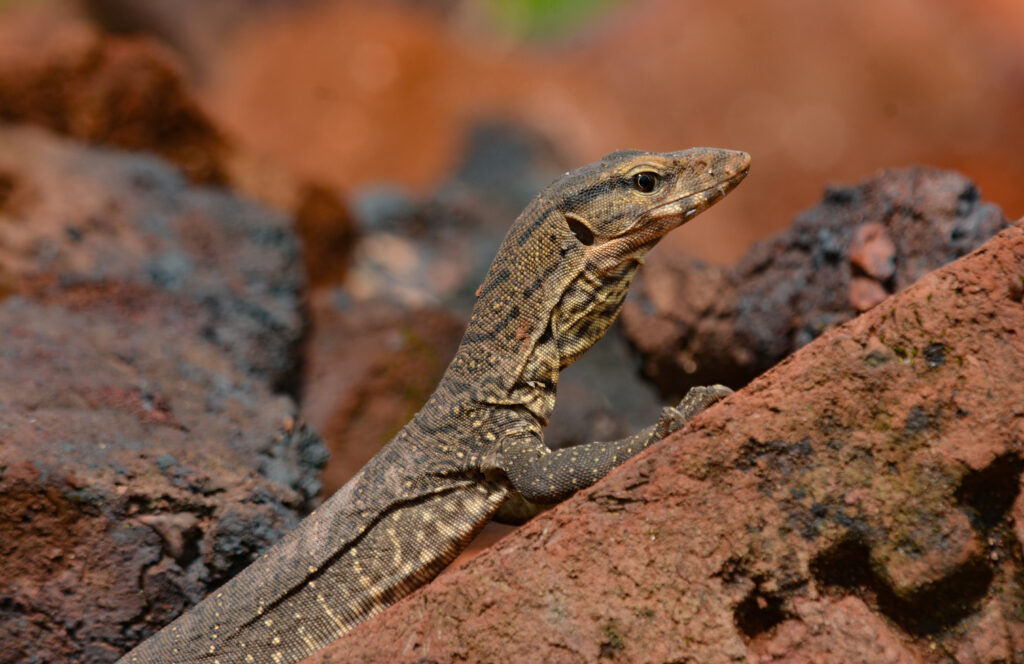
The scientific plot thickened dramatically in August 2020 when researchers announced the discovery of a second, better-preserved Oculudentavis specimen. This new fossil, temporarily named “Oculudentavis naga,” provided crucial additional anatomical information missing from the first specimen. The new specimen revealed key skeletal features inconsistent with dinosaurian or avian anatomy, including scales, certain skull features, and shoulder structures. Detailed CT scans allowed researchers to examine internal structures previously hidden, revealing anatomical details impossible to observe in the original specimen. The additional evidence strongly suggested that rather than being a dinosaur, Oculudentavis belonged to the diapsid reptiles, specifically in or near the lizard lineage. This revelation demonstrated how additional specimens can fundamentally transform our understanding of ancient organisms.
The Reclassification as a Lizard

By early 2021, the scientific consensus had shifted dramatically, with multiple independent research teams concluding that Oculudentavis was most likely an unusual lizard rather than a dinosaur or bird. The retraction of the original Nature paper followed, accompanied by new studies reclassifying the animal within Squamata—the group containing all lizards and snakes. Specifically, Oculudentavis appeared to belong to a group of small, insectivorous lizards with certain bird-like convergent adaptations. Key lizard characteristics included a skull opening called the squamosal notch, the specific pattern of tooth attachment, and features of the braincase that aligned with squamate anatomy. This taxonomic journey from “world’s smallest dinosaur” to “unusual lizard” highlighted both the difficulties in interpreting fossils from groups that might display convergent evolution and the importance of multiple specimens in paleontological research.
The Amber Preservation Factor
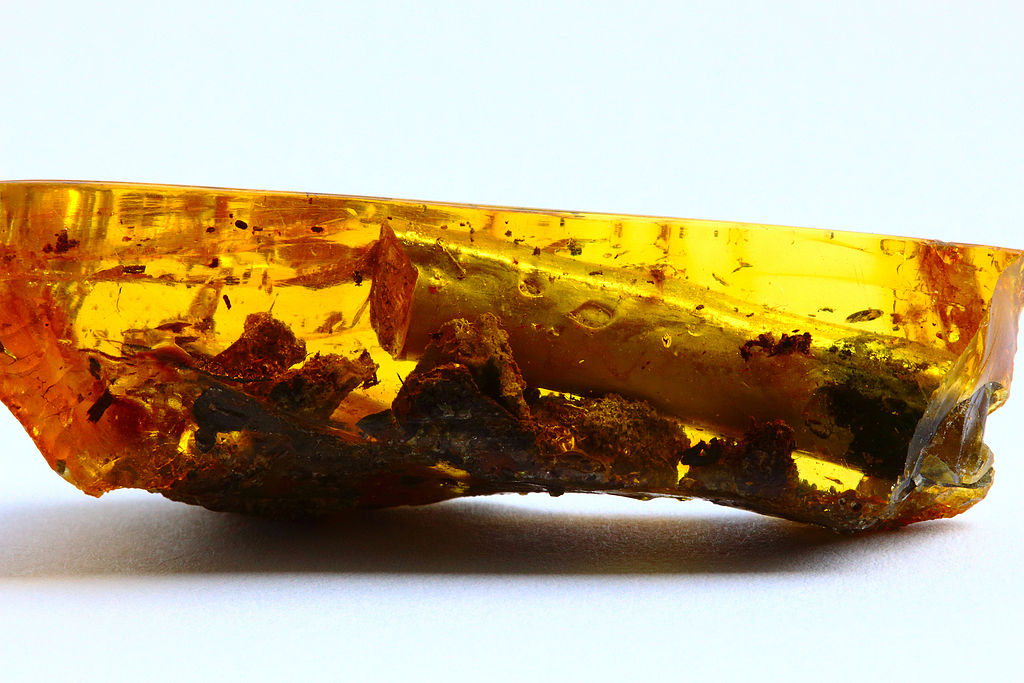
The exceptional preservation of Oculudentavis in amber played a crucial role in both the initial misidentification and subsequent correction. Amber—fossilized tree resin—creates unique preservation conditions that can maintain microscopic details lost in traditional rock fossilization, including soft tissues and three-dimensional structures. The Myanmar amber deposits have yielded numerous spectacular fossils, including insects with preserved coloration, flowers with pollen, and small vertebrates with skin impressions intact. However, amber preservation can also create challenges for interpretation, as the pressure during entombment can distort delicate structures, potentially leading to misinterpretations. Additionally, amber typically preserves only small organisms or parts of larger ones, making it difficult to place fragmentary remains in proper evolutionary context without complete body fossils.
Ethical Concerns Surrounding Myanmar Amber

Beyond the scientific controversy, the Oculudentavis story intersects with serious ethical concerns regarding Myanmar amber. These amber deposits are predominantly mined in Kachin State, where ongoing armed conflict has been linked to human rights abuses, and amber mining has allegedly funded military operations. Following the 2021 military coup in Myanmar, many scientific journals and institutions have established moratoriums on publishing research based on amber specimens acquired after the conflict escalated in 2017. These ethical considerations have prompted important discussions within paleontology about the provenance of specimens, the potential exploitation of conflict resources, and researchers’ responsibilities regarding the socio-political contexts of their materials. Some scientists have called for establishing clear ethical guidelines for working with amber from conflict regions, while others advocate for focusing research on specimens already in collections rather than newly acquired material.
What Oculudentavis Tells Us About Ancient Ecosystems
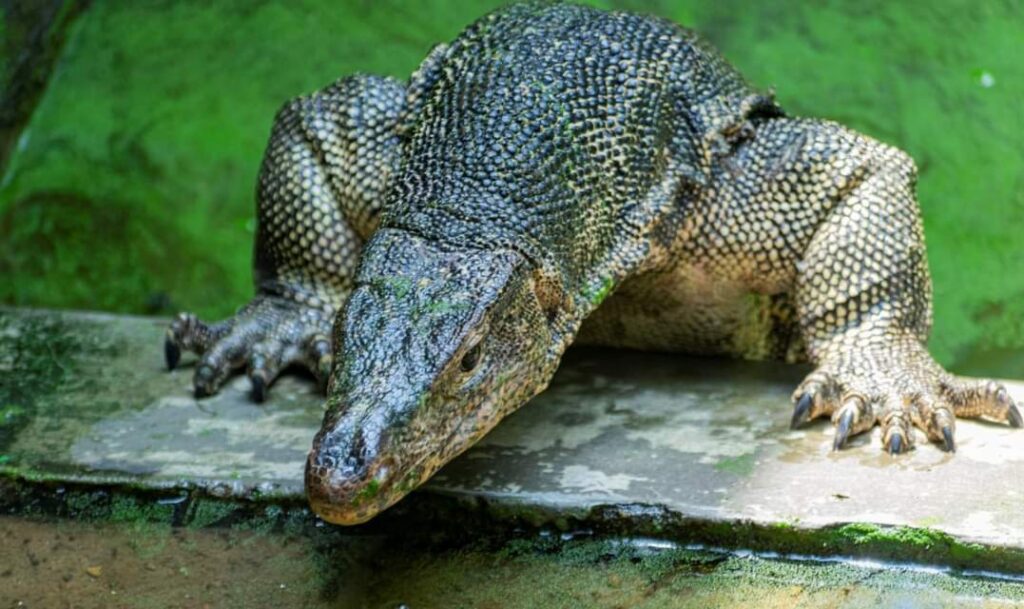
Despite the reclassification, Oculudentavis remains a scientifically valuable discovery that offers insights into Cretaceous forest ecosystems. The mid-Cretaceous period saw the rise of flowering plants, transforming forests and creating new ecological niches for small vertebrates. Oculudentavis appears to have been a specialized insectivore, with large eyes suggesting visual hunting and numerous small teeth adapted for catching tiny prey. Its extremely small size indicates it occupied a specific ecological niche, possibly foraging in forest canopies for insects too small for larger predators to efficiently pursue. The existence of such specialized micro-predators suggests a complex forest ecosystem with rich biodiversity at all scales. By studying creatures like Oculudentavis, paleontologists can reconstruct food webs and ecological relationships in ancient forests, providing a more complete picture of how Mesozoic ecosystems functioned.
The Scientific Process in Action

The Oculudentavis saga represents a textbook example of how the scientific process operates, particularly in paleontology. The initial discovery, publication, subsequent questioning, reanalysis, and ultimate reclassification demonstrate science’s self-correcting nature. Rather than representing a failure, this progression illustrates science working exactly as intended, with hypotheses proposed, tested, and refined as new evidence emerges. The transparent way in which scientists acknowledged the misclassification and worked to correct the record stands in contrast to how scientific controversies are sometimes portrayed in popular media. The case demonstrates how multiple research teams, sometimes with competing interpretations, ultimately contribute to advancing knowledge through careful analysis, debate, and the integration of new evidence. For students and the public, the Oculudentavis story provides a valuable window into the reality of scientific progress—not as a straight line, but as a winding path of discovery, correction, and refinement.
Technological Advances That Enabled the Research

The Oculudentavis research was made possible by cutting-edge technological approaches that have revolutionized paleontology in recent decades. Micro-computed tomography (micro-CT) scanning allowed researchers to examine the internal anatomy of the skull without damaging the irreplaceable amber specimen. These scans created detailed three-dimensional models revealing features otherwise invisible, such as brain cavity shape, inner ear structures, and tooth attachment patterns. Advanced phylogenetic analysis software enabled scientists to compare hundreds of anatomical characteristics against known species, helping to determine evolutionary relationships with greater precision than previously possible. Digital reconstruction techniques allowed researchers to correct for deformation that occurred during preservation, presenting a more accurate picture of the animal’s original anatomy. These technologies exemplify how modern paleontology has progressed beyond simple description to incorporate sophisticated analytical approaches from medical imaging, computer science, and evolutionary biology.
The Legacy of Oculudentavis in Paleontology
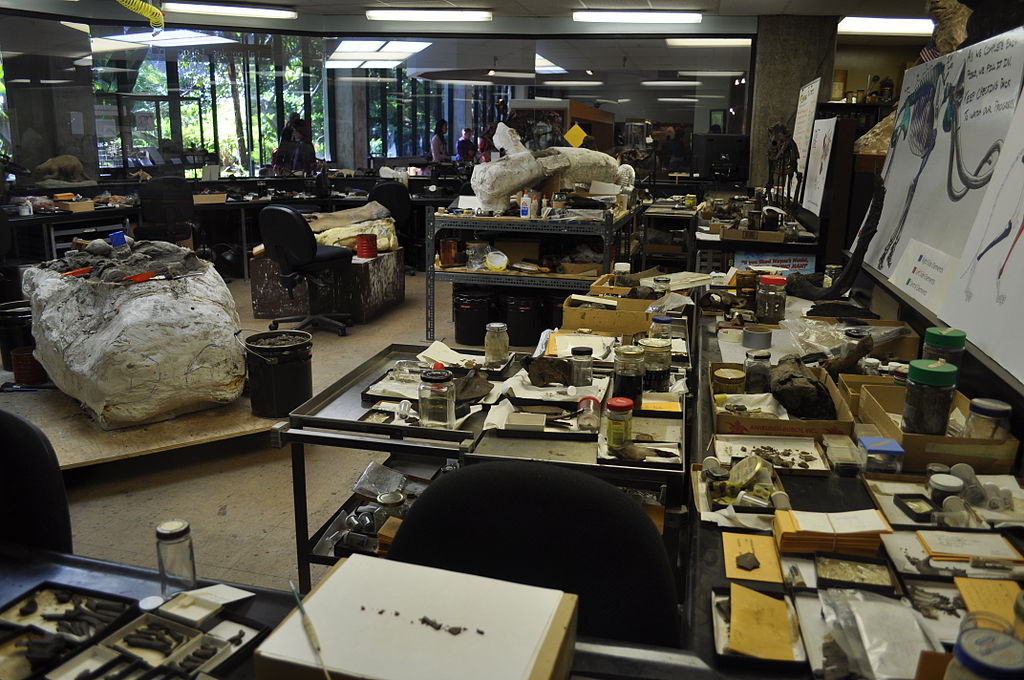
Though no longer considered a record-breaking dinosaur, Oculudentavis has left a significant impact on paleontology. The case has prompted methodological improvements in how researchers analyze amber-preserved vertebrates, with greater attention to potential preservation artifacts and convergent evolution. The controversy sparked renewed interest in the diversity of small-bodied vertebrates from the Cretaceous period, an area often overshadowed by larger, more spectacular dinosaur discoveries. Several research teams have developed enhanced protocols for distinguishing between lizards and early birds in fragmentary fossils, improving the reliability of future classifications. Perhaps most importantly, the Oculudentavis case has become a valuable teaching example in science education, demonstrating how scientific knowledge evolves through hypothesis testing, peer review, and the integration of new evidence. The story continues to be cited in discussions about scientific methodology, the importance of specimen access, and the value of multidisciplinary approaches in paleontological research.
Future Directions in Mesozoic Microvertebrate Research
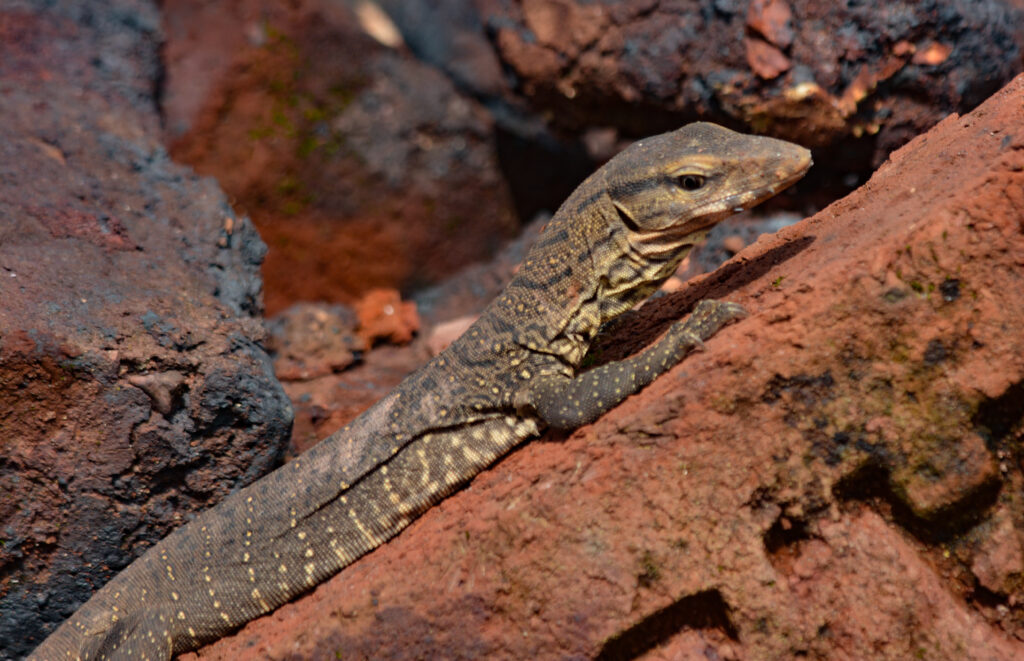
The Oculudentavis case has highlighted the importance of studying small-bodied vertebrates from the Mesozoic Era, opening new research avenues for paleontologists. There is growing recognition that microvertebrates likely constituted the majority of vertebrate diversity in ancient ecosystems, yet remain underrepresented in the fossil record due to preservation biases favoring larger animals. Amber deposits worldwide, including those from Canada, the Dominican Republic, and Lebanon, may yield additional specimens that help fill these gaps in our understanding. Researchers are increasingly employing targeted excavation techniques specifically designed to recover microvertebrate remains from conventional fossil sites, including fine-mesh screening of sediments. Advances in micro-imaging technologies continue to improve our ability to study diminutive specimens, with techniques like synchrotron radiation micro-CT scanning offering unprecedented resolution of internal structures. As these research directions expand, our understanding of Mesozoic ecosystems will become increasingly comprehensive, moving beyond the traditional focus on large, charismatic megafauna to appreciate the full spectrum of ancient biodiversity.
Conclusion

The story of Oculudentavis exemplifies both the excitement and complexity of paleontological discovery. What began as a sensational announcement of the smallest dinosaur ever found evolved into a nuanced scientific narrative about convergent evolution, the challenges of interpreting ancient remains, and the ethical dimensions of paleontological research. While no longer considered a dinosaur, this tiny amber-preserved reptile continues to offer valuable insights into Cretaceous ecosystems and the diversity of small-bodied vertebrates that inhabited ancient forests. Perhaps most importantly, the Oculudentavis saga provides a powerful demonstration of science working as intended—advancing knowledge not through unwavering certainty, but through careful analysis, peer review, and the willingness to revise conclusions when new evidence emerges. In this respect, what might superficially appear to be a scientific setback ultimately represents one of science’s greatest strengths.

